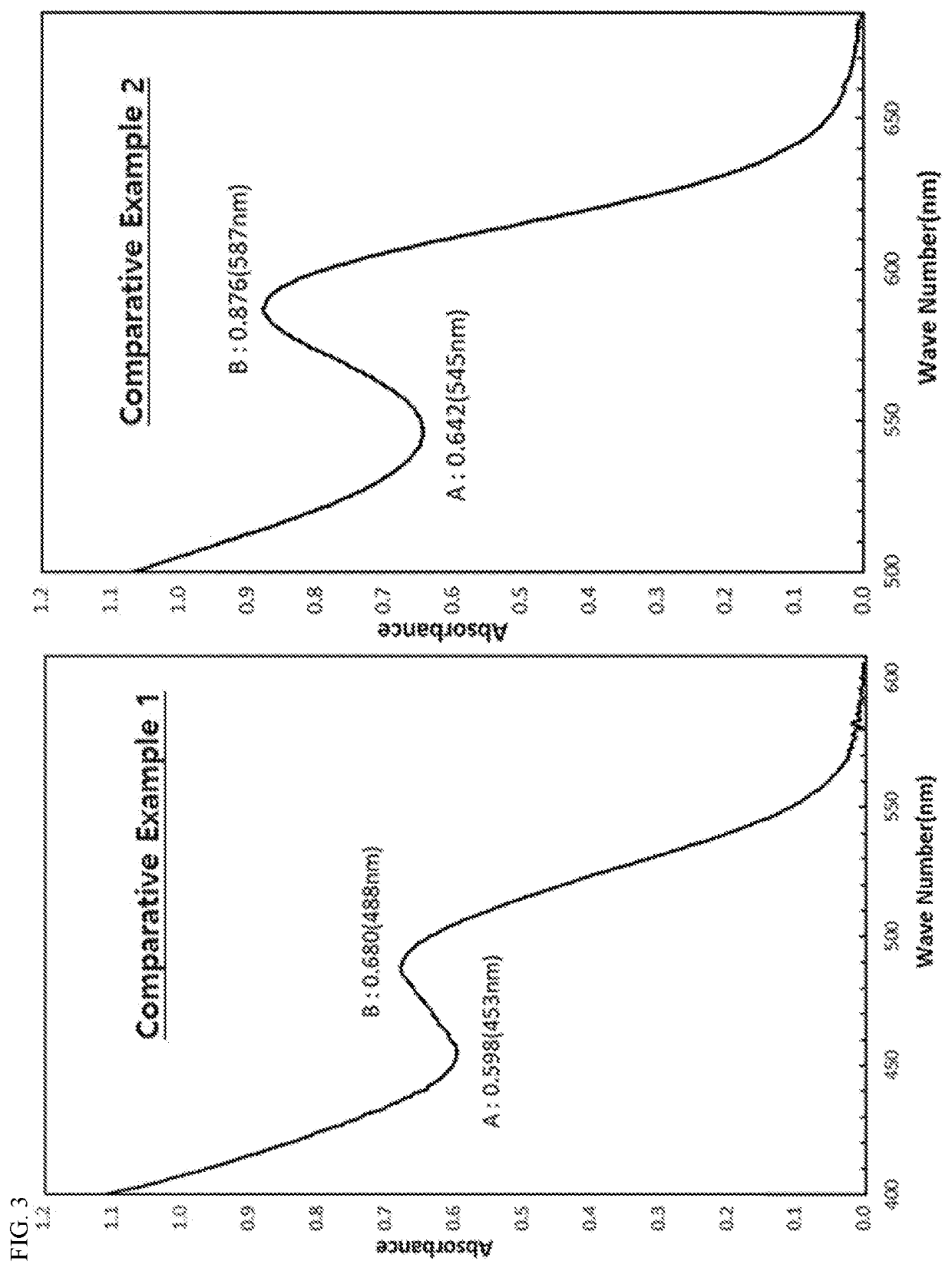Method for producing a quantum dot nanoparticles, quantum dot nanoparticles prepared by the method, quantum dot nanoparticles having a core-shell structure, and light emitting element
nanoparticle technology, applied in the field of preparing a quantum dot nanoparticle having a core-shell structure, can solve the problems of increasing the demand for cd-free quantum dots, the method of preparing a high-quality quantum dot particle by controlling the effect, and the increase in the quantity of quantum dots. , to achiev
- Summary
- Abstract
- Description
- Claims
- Application Information
AI Technical Summary
Benefits of technology
Problems solved by technology
Method used
Image
Examples
example 1
on of Quantum Dot Nanoparticle
[0112]13.7 g of indium palmitate precursor prepared in Preparative Example 1, 9.7 g of zinc oleate precursor prepared in Preparative Example 2, and 35.1 g of 1-octadecene were input in a 4-neck 1 L glass reactor equipped with a heating mantle, reduced pressure vacuum device, thermometer, and mechanical stirrer, and the temperature was elevated to 130° C., and then, moisture and trace acetic acid therein were completely removed by maintaining a reduced pressure vacuum at 10 mTorr for 3 hours. The pressure was released, and then all conditions were carried out while introducing argon (Ar) gas. The temperature was elevated to 170° C., and 15.6 g of a phosphorus (P) precursor mixture prepared in Preparative Example 3 was rapidly input at 170° C. The temperature was elevated to 250° C., and 1 mL of water / acetone (1 / 10, v / v) was slowly input. After the input was completed, the temperature was elevated again to 280° C., 16.7 g of the phosphorus (P) precursor m...
example 2
on of Quantum Dot Nanoparticle
[0116]A green emitting quantum dot nanoparticle having a core-shell structure was prepared in the same manner as in Example 1, except that 1 mL of heavy water / ethanol (1 / 10, v / v) was used instead of 1 mL of water / acetone (1 / 10, v / v) used in Example 1 above.
example 3
on of Quantum Dot Nanoparticle
[0117]27.5 g of indium palmitate precursor prepared in Preparative Example 1 and 35.1 g of 1-octadecene were input in a 4-neck 1 L glass reactor equipped with a heating mantle, reduced pressure vacuum device, thermometer, and mechanical stirrer, and the temperature was elevated to 130° C., and then, moisture and trace acetic acid therein were completely removed by maintaining a reduced pressure vacuum at 10 mTorr for 3 hours. The pressure was released, and then all conditions were carried out while introducing argon (Ar) gas. The temperature was elevated to 170° C., and 15.6 g of a phosphorus (P) precursor mixture prepared in Preparative Example 3 was rapidly input at 170° C. The temperature was elevated to 250° C., and 1 mL of water / ethanol (1 / 10, v / v) was slowly input. 1 minute after the input was completed, 19.6 g of the indium palmitate precursor prepared in Preparative Example 1 was input. The temperature was elevated again to 280° C., and 16.7 g o...
PUM
| Property | Measurement | Unit |
|---|---|---|
| volume ratio | aaaaa | aaaaa |
| temperature | aaaaa | aaaaa |
| wavelength | aaaaa | aaaaa |
Abstract
Description
Claims
Application Information
 Login to View More
Login to View More - R&D
- Intellectual Property
- Life Sciences
- Materials
- Tech Scout
- Unparalleled Data Quality
- Higher Quality Content
- 60% Fewer Hallucinations
Browse by: Latest US Patents, China's latest patents, Technical Efficacy Thesaurus, Application Domain, Technology Topic, Popular Technical Reports.
© 2025 PatSnap. All rights reserved.Legal|Privacy policy|Modern Slavery Act Transparency Statement|Sitemap|About US| Contact US: help@patsnap.com



